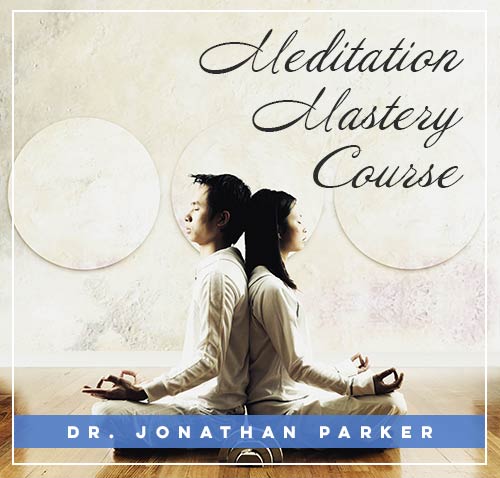Seven Suggestions From A Former Monk On How To Make Peace With Your Chaotic Mind

Looking for more amazing products? Check out our online store and explore our collection here! Happy shopping!
Before diving in, please note: This post is for informational purposes only. If you’d like to know more about how we approach topics, feel free to check out our friendly Disclaimer Page.
Hey there, amazing readers! 
We’re committed to delivering quality posts, and your support (even just sticking around despite the ads) means everything to us. So, bear with us, and thanks for helping us keep the good vibes rolling. Now, on to the fun stuff!
TRANSLATE BUTTON AT THE END OF THE ARTICLE
“Make sure that both your entrance door and your rear door are left open.
Just let whatever comes to mind pass.
Simply refrain from offering them tea.” Shunryu Suzuki
There are very few things in life that are more frustrating than being plagued by an active mind that is always going and won’t let you have even a second of peace and quiet.
Having a mind like this is one of those things.
During your long-awaited vacation, you are now relaxing by the poolside.
The weather couldn’t be more ideal.
Your schedule is not cluttered.
You take a refreshing drink to your deckchair and grab your go-to read before settling in for the day.
Everything is flawless, or at least really close to ideal.
It is very evident that the “on vacation” communication has not been received by the department of the mind.
“Holy cow, that libation was not cheap.” You had better pull your stomach in since someone is approaching.
You have a complexion as pale as a sheet.
What on earth are people going to think about this?
So, this concludes everything, right?
On Monday, I will officially begin my new diet.
Oops, I completely forgot that I was on vacation.
Okay, I’ll get started when I get back to the house.
Even just writing about it may be draining, so imagine what it must be like to really go through it.
To say the least, it may be annoying to be forced to endure a never-ending stream of meaningless conversation while being clueless about how to put an end to it.
I know.
Because of the excruciating pain I was experiencing on the inside of my own brain, I decided to attend a meditation retreat for a period of six months and eventually get ordained as a monk.
To my delight, I immediately learned that silencing a chattering mind is not quite as challenging as I had anticipated it to be.
That you don’t even have to adjust or mend your thinking is the hint I’m giving you.
Even though I still have my crazy times when my mind goes off on a tirade for no apparent reason, my overall experience is so much more calm and tranquil than it used to be.
This is despite the fact that I still have those moments.
I’d be happy to discuss certain facts with you that may come as a surprise but that I believe will be of assistance to you in achieving your goals.
Here are seven pieces of advice that you can start putting into practice immediately:
1. Recognize That Your Thoughts Are Always Moving
Did you know that a typical person’s mind generates over 70,000 ideas every single day?
That’s a lot to think about.
No wonder it seems like there are so many people in there!
Even people who seem to have a low-key demeanor actually have a lot of activity going on in their heads at any given moment.
Don’t be shocked, therefore, if you find that your mind is racing.
Do not add an extra layer of anguish to your experience by convincing yourself that there is something wrong with you because you have a lot of ideas.
It is not the case.
To anticipate that your mind will not be active is comparable to anticipating that the grass will not be green.
That should be the norm.
2. Participating With The Mind Is Purely Voluntary
If I had to select just one item about the mind that I picked up during my time spent as a monk, the one thing that had the most significant influence on the degree to which I was able to achieve inner calm would be this:
Participating with the mind is not required.
It is not always the ideas themselves that are the source of our suffering, but rather our fixation and absorption with them.
We spend our days chewing on them, wallowing in them, and stewing on them, and we give them an excessive amount of time and attention in general.
And there’s no reason for us to.
Do you want to know what the key is to maintaining peace?
The less you let yourself get distracted by the activities of your mind, the more at ease you will feel.
Relax and let your thoughts wander as you take a seat.
Your participation is completely voluntary.
This gets us to the following point, which is as follows:
3. Observe Your Internal Monologue From A Distance
It is necessary to put some physical distance, as well as some mental breathing room, between ourselves and our minds in order to free ourselves from the shackles of our own ideas.
The majority of the thought processes that disturb our inner tranquility operate unintentionally and on autopilot.
Like a broken record, the same old patterns keep playing over and over again, no matter how much time passes.
Because we are so used to doing it, we don’t even realize when we are engaging in the behavior.
The important thing is to bring these unconscious tendencies into your waking consciousness.
When you first begin to practice meditation, the first thing you should do is take a few steps back and observe your thoughts in an objective manner, maintaining an attitude of curiosity while accepting them without criticism.
You could also discover that the sheer process of observing your ideas, as opposed to being engrossed in them, can cause thinking to halt dead in its tracks, or at the very least, slow down significantly.
4. Allow Your Mind The Freedom To Go Anywhere It Likes
If you want to get an angry bull under control, the worst thing you can do is attempt to contain him in any manner, including tying him up or putting him in a pen.
This will simply make him more angry, and it will be harder to manage.
Providing him with a vast, wide field to gallop about in is the most effective way to quell his agitation.
Because he will encounter no opposition, he will run out of steam very fast.
And the same is true with regard to the intellect.
It’s not the thoughts themselves that are the problem.
When you give them space, they enter your consciousness for a little while, then go on to other things.
No issue.
We get into problems and cause unnecessary pain for ourselves when we make the mistake of believing that we can control or manage them by judging them to be undesirable, incorrect, or unsuitable.
If you let them do as they like inside the large and open field of your awareness, they will run out of steam very fast.
Avoid giving them the energy they need to win by being stubborn.
If ideas are going to be there anyway, it is far more beneficial to become friends with them than to fight against them.
What happens to a thought that makes you feel sad or angry if you accept it rather than try to push it away?
What are the repercussions of your decision to ignore its presence?
5. You Shouldn’t Take Other People’s Ideas To Heart
Another paradigm shift for me was realizing that the ideas I call “my” are not really mine at all.
The majority of individuals, in most cases, experience the following:
You feel envious.
You feel terrified.
You feel enraged.
And you then berate yourself, believing that you are personally responsible for the thoughts (feelings and emotions as well) that show up in your head; you believe that there is something wrong with you for having these thoughts because you believe that there is something wrong with you for having these thoughts.
It is not the case.
You are not the creator of the ideas that go through your head.
When you pay careful attention to the mind, you’ll observe that thoughts come into existence all by themselves, seemingly out of thin air.
For the purpose of illuminating our connection to the mind, the practice of mindfulness training makes use of the metaphor of “the undercurrent and the observer.”
The most important thing to realize is that the undercurrent, which is the never-ending stream of ideas, sensations, and emotions that move through your consciousness, is something that spontaneously arises.
Because you do not have control over it, the response should be impersonal.
The majority of individuals, on the other hand, flail about in the middle of the stream, as if they were frenzied traffic policemen, desperately attempting to regulate the flow by accepting and rejecting that thought.
Attempting to exercise control over the river is a fruitless and taxing endeavor.
It is better to take on the role of spectator, to sit quietly on the riverbank and watch the river run past, knowing that what is happening is not personal.
The less effort you put into attempting to exert control over the flow, the more at ease you’ll feel as a result.
6. Recognize the Distinction Between Thinking and Thought Occurrence
It’s true that you have little control over the ideas that go through your brain, but what you give consideration to is an entirely different story.
Let’s imagine you start thinking, “My boss doesn’t like me,” and it stays in your head.
The thought then prompts a conversation in your thoughts, which goes something like this: “He will most likely pass me up for the next promotion.” It is completely unjust.
I’ve been employed at this company for a lot longer than Jane has.
However, it appears that he has a strong liking for her.
Nothing ever works out in my favor.
I’m simply unfortunate in life.”
This form of unproductive thinking is the main source of pain for the vast majority of people, and it is fully within our power to decide whether or not we will participate in it.
Some of the patterns that may cause so much unneeded suffering include catastrophizing about the future, catastrophizing about the past, and wallowing in false ideas and assumptions.
Replaying the past over and over, for example, is one of these patterns.
And it’s absolutely preventable.
Stop what you’re doing if you become aware that your mind is playing a movie that isn’t constructive.
If you do not choose to proceed, you are under no obligation to do so since there is nothing that can force you to do so.
You are the one in charge of this situation.
Instead, make it a point to concentrate on being in the here and now.
Focus your attention on the feelings in the bottoms of your feet, the sound of the wind rustling through the trees, and the breath that you are taking right now.
Habit has a significant role in unproductive thinking.
And just like other habits, it can be broken with enough self-awareness and effort.
7. Try To Concentrate More On The Here And Now
One of the most important realizations that comes from regular meditation practice is the realization that your consciousness can only be focused on one location at a time.
When the mind is preoccupied with thought, it is impossible to be conscious of one’s physical surroundings at the same time.
The same thing happens to your mind when you bring your focus back to the here and now.
When you bring your attention to the here and now, your mind will naturally begin to slow down.
When you are self-aware enough to see that you are beginning to slip into a pattern of habitual thinking, you should immediately pause and engage your senses.
Focus on the feeling of the air gently brushing against your skin; feel the weight of your body coming into contact with the chair; and listen to the noises that are occurring around you.
Maintain a keen awareness of what is taking place right now, and take note of what your thinking mind is doing.
Regain Command of Your Hectic Mind and Do It Now!
The mind, in and of itself, is not a negative quality.
It seems unlikely that one could survive without one in this day and age.
It may be of great use when it comes to finding solutions to problems, writing articles, making travel arrangements, or even just remembering which house is yours when you arrive home from work.
The human mind is a wonderful instrument that, when put to good use, can be efficiently used to carry out a variety of activities.
However, it is also capable of causing severe damage, much like a Frankenstein creature that has escaped its creator’s control and taken on a life of its own.
The mind is capable of becoming both a lovely servant and a treacherous master.
Whoever is in control will determine everything.
In the future, when you are attempting to relax while sitting in a deck chair and your mind begins to do its wild dance (as it will), you should remind it who is in charge.
Don’t give it the ability to destroy your vacation by giving in to its demands.

The Enlightenment Journey is a remarkable collection of writings authored by a distinguished group of experts in the fields of spirituality, new age, and esoteric knowledge.
This anthology features a diverse assembly of well-experienced authors who bring their profound insights and credible perspectives to the forefront.
Each contributor possesses a wealth of knowledge and wisdom, making them authorities in their respective domains.
Together, they offer readers a transformative journey into the realms of spiritual growth, self-discovery, and esoteric enlightenment.
The Enlightenment Journey is a testament to the collective expertise of these luminaries, providing readers with a rich tapestry of ideas and information to illuminate their spiritual path.
Our Diverse Expertise
While our primary focus is on spirituality and esotericism, we are equally passionate about exploring a wide range of other topics and niches 

To ensure we provide the most accurate and valuable insights, we collaborate with trusted experts in their respective domains 
Our blog originally focused on spirituality and metaphysics, but we’ve since expanded to cover a wide range of niches. Don’t worry—we continue to publish a lot of articles on spirituality! Frequently visit our blog to explore our diverse content and stay tuned for more insightful reads.
Hey there, amazing reader! 
Check out our store here and take a peek at some of our featured products below! Thanks for being awesome!












